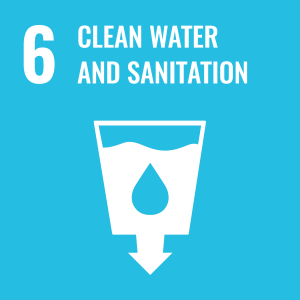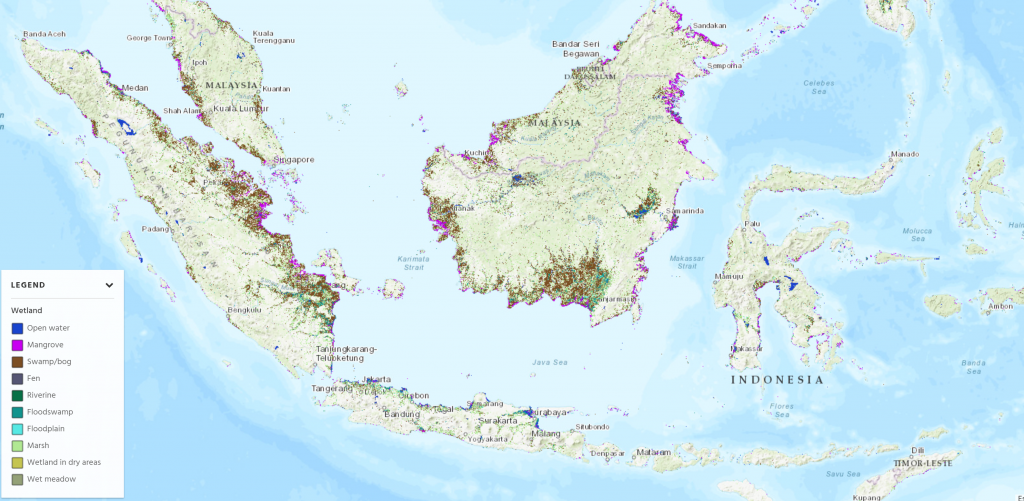CEOS Support to SDG 6: Clean Water & Sanitation
This is the second in a series of six articles focusing on the UN Sustainable Development Goals (SDGs), and how Earth observation, in particular CEOS, can help in reaching these goals. The series of articles includes:
- CEOS Support to SDG 6: Clean Water & Sanitation (this article)
The series has been prepared in support of the 2022 CNES CEOS Chair’s Priority #1: Paths to Sustainability, alongside the 2022-23 ESA SIT Chair’s thematic priority on the Sustainable Development Goals and the 2030 Agenda. The work is drawn from the previous SDG ad hoc team, co-lead by CSIRO and ESA.
The sixth Sustainable Development Goal (SDG 6) is to ensure access to water and sanitation for all. This is a basic service, which many around the world do not have access to. One in three people do not have access to safe drinking water, while two out of five do not have access to a basic hand-washing facility with soap and water. The World Health Organisation states that handwashing is one of the most effective actions an individual can take to reduce the spread of pathogens, and hence ensuring the access to appropriate facilities is at the core of sustainable development.
a basic service, which many around the world do not have access to. One in three people do not have access to safe drinking water, while two out of five do not have access to a basic hand-washing facility with soap and water. The World Health Organisation states that handwashing is one of the most effective actions an individual can take to reduce the spread of pathogens, and hence ensuring the access to appropriate facilities is at the core of sustainable development.
Satellite observations of Earth’s water cover a wide variety of parameters and observations, including clouds, precipitation, soil moisture, groundwater storage, inland water bodies, river and lake surface levels and the cryosphere, alongside a number of ocean parameters. These observations form the basis of new and existing Essential Climate Variables (ECVs) and, when combined with in situ data, can improve climate models and stimulate cross-ECV activities. These activities are essential to inform operational climate services and the state of the climate (for example, the work of the Intergovernmental Panel on Climate Change), and to respond to policy requirements (for example, The Paris Agreement). These observations and models can assist in building an integrated water resource management system, a crucial step towards achieving SDG 6.
Satellite imagery can also assist in investigating the long-term changes of the Earth’s water bodies through data archives, such as the Landsat data archive, which stretches back to 1984. One example of such a project is the European Commission Joint Research Centre’s Global Surface Water Explorer (GSWE). The GSWE provides a freely available dataset to the public, scientists, and policymakers to help countries improve the modelling of surface water, provide evidence of changes in water-related ecosystems, and inform water management decision-making.
In partnership with GEO Wetlands, GEO AquaWatch and GEO GloWS (Global Water Sustainability), CEOS has been working on a technical report that addresses how satellite data can be used to achieve target 6.6: By 2020, protect and restore water-related ecosystems, including mountains, forests, wetlands, rivers, aquifers and lakes, and particularly indicator 6.6.1: “Change in the extent of water-related ecosystems”. This work has included:
- Review of the UNEP 6.6.1 monitoring methodology and Freshwater Ecosystems
Explorer and associated methodologies, as a basis to identify areas of use and
better uptake of satellite observations within current methodologies. - Discussions with Ramsar on EO approaches to wetland inventories and EO inclusion in the Ramsar Toolkit for National Wetlands Inventories.
- Analysis on two SDG pathways, in the production of global datasets (top down from UNEP) and development of national capacities (bottom up from Ramsar).
- Identification of potential dataset improvements for CEOS Agencies producing global EO datasets for many 6.6.1 sub-indicators and associated variables, Identification of the need for multi-sensor approaches for all sub-indicators (e.g. water, wetlands, mangroves, water quality) to address the limitation of single sensor approaches, and better capture temporal dynamics.
- Round Robin intercomparison of Surface Water Detection algorithms at 10m based on Sentinel 1 and Sentinel 2, organised by the ESA WorldWater project.
- Analysis of advances in water surface elevation from radar altimetry to infer changes in lake volumes and river discharge.
There are also a number of projects undertaken by CEOS Agencies which use EO to address other targets of SDG 6. These include:
- 6.3: By 2030, improve water quality by reducing pollution, eliminating dumping and minimising release of hazardous chemicals and materials, halving the proportion of untreated wastewater and substantially increasing recycling and safe reuse globally, and
- 6.5: By 2030, implement integrated water resources management at all levels, including through transboundary cooperation as appropriate.
These are future areas where CEOS could be further involved in.
Indicator 6.3.2 “Proportion of bodies of water with good ambient water quality”, and one project that is helping to tackle this is the Algal Bloom Early Warning Alert System, a collaboration between Australia’s national science agency (CSIRO) and the New South Wales Department of Primary Industries – Office of Water. Both Sentinel 2 (ESA, Copernicus Programme) and Landsat 8 (NASA) satellite sensors offer enough resolution, wide scale and frequent monitoring of water quality in inland water bodies in support of early algal bloom alerts for water managers. The generic approach developed here to look at turbidity will be suitable for all optical water quality products in the future.
Indicator 6.5.1 “Degree of integrated water resources management implementation”, is being supported in the flood-prone Asia-Pacific region using JAXA’s Flood Prediction System Using the Global Satellite Map of Precipitation (GSMaP). This combines the satellite-based global precipitation data GSMaP with ground observations (rain gauges, water-level gauges) for correction and validation to improve the prediction accuracy of extreme weather events, and strengthening capacities of both governments and communities for pre-and post-disaster actions. Currently, flood prediction systems using GSMaP have been implemented in Bangladesh, the Philippines, Vietnam, and Pakistan in collaboration with the Asian Development Bank (ADB) and UNESCO. These pilots aim to test the viability of providing flood prediction systems using GSMaP as an input, and ultimately expand the system to more countries in the region.
